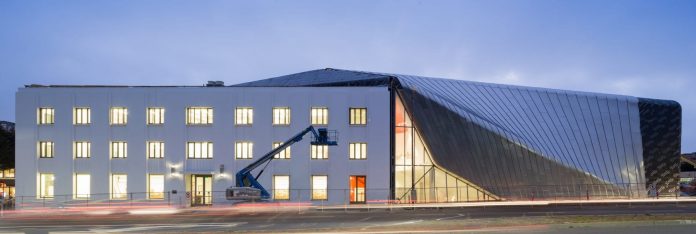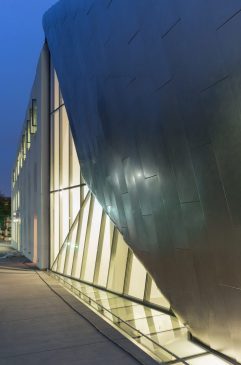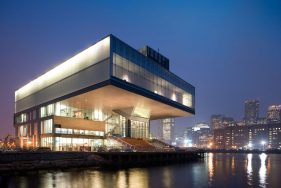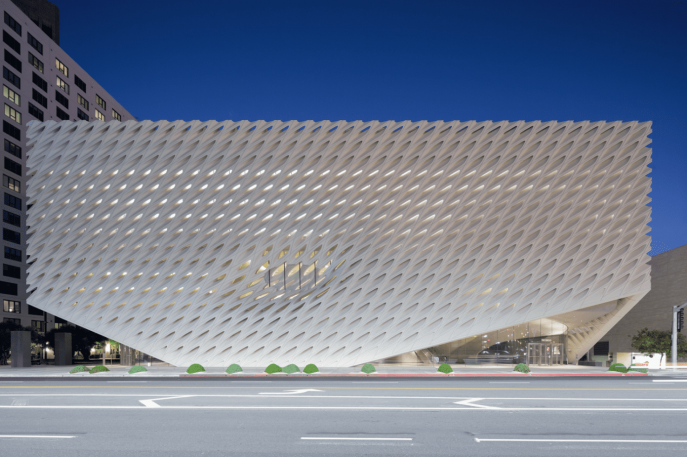
The visual arts center for the University of California, Berkeley Art Museum and Pacific Film Archive (BAMPFA), will open its new building to the public with a free all day open house on Sunday, January 31, 2016. The new building designer, Diller Scofidio + Renfro, is known for such projects as the High Line elevated park in New York; The Broad Museum in Los Angeles; and the Institute of Contemporary Art, Boston. Located at the intersection of Oxford and Center Streets, directly across from the UC Berkeley campus, the new BAMPFA will feature spaces for its historic and contemporary art and film collections, as well as screening theaters.
The new BAMPFA integrates the 48,000-square-foot Art Deco style former UC Berkeley printing plant with a 35,000-square-foot new structure. The building will total 83,000 square feet, with 25,000 square feet of gallery space. Visitors can enjoy two film theaters (with 232 seats and 33 seats, respectively), a performance forum, four study centers for art and film, a reading room, an art-making lab, a cafe, and an outdoor LED screen and viewing plaza.

BAMPFA photos by Iwan Baan
With more than 400 film screenings and up to 20 art exhibitions annually, as well as an extensive schedule of public programs and performances, BAMPFA will anchor Berkeley’s downtown arts district. BAMPFA Director Lawrence Rinder comments, “The new BAMPFA will be the architectural and cultural centerpiece of downtown Berkeley. Combining serene spaces for viewing film and art with dynamic public areas, the building will inspire audiences for generations with its fresh, imaginative design and versatility.”
BAMPFA’s collection of over 19,000 works of art dates from 3000 BCE to the present day and includes important holdings of Neolithic Chinese ceramics, Ming and Qing Dynasty Chinese painting, Old Master works on paper, Italian Baroque painting, early American painting, Abstract Expressionist painting, contemporary photography and Conceptual art. The collection also includes over 17,500 films and videos, including the largest collection of Japanese cinema outside of Japan, impressive holdings of Soviet cinema, West Coast avant-garde film, seminal video art, as well as hundreds of thousands of articles, reviews, posters, and other ephemera related to the history of filmmany of which are digitally scanned and accessible online.



















